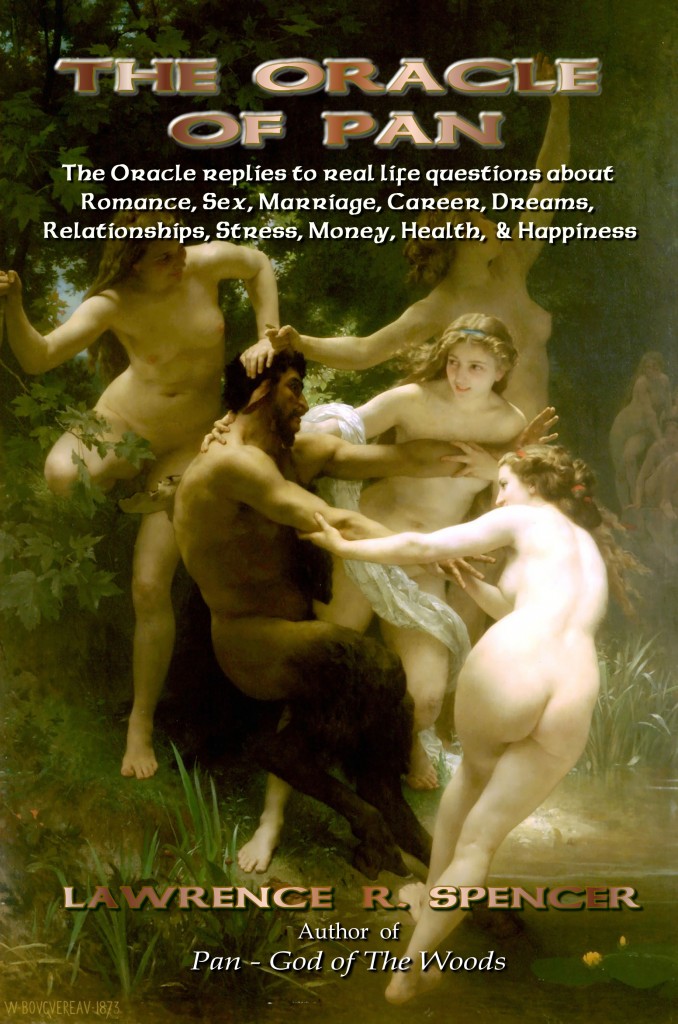Republished by Blog Post Promoter
About The Oracle of Pan
What follows are questions that have been received by the Oracle of Pan through the website for the book, “Pan – God of The Woods”. This book contains the actual questions asked, and the replies given by the “Oracle of Pan”. Each person asking a question of The Oracle of Pan is asked to offer a gift to honor the spirit of the god Pan by planting a tree.
Oracle:
An oracle is a person or agency considered to be a source of wise counsel or prophetic opinion; an infallible authority, usually spiritual in nature. It may also be a revealed prediction or precognition of the future, from deities, that is spoken through another object (e.g.: runemal) or life-form (e.g.: augury and auspice). In the ancient world many sites gained a reputation for the dispensing of oracular wisdom: they too became known as “oracles”, and the oracular utterances, called khrēsmoi in Greek, were often referred to under the same name — a name derived from the Latin verb ōrāre, to speak.
— Reference: www.Wikipedia.org
A Nymph is any member of a large class of mythological entities that are more formally known as ‘Gabi’. They were typically associated with a particular location or landform, in Gabi’s case in the forests. They are known for their astounding beauty. However, no nymphs compare to their goddess Gabi. She is the almighty Queen of Nymphs. Nymphs were the frequent target of satyrs.
Nymphs live in mountains and groves, by springs and rivers, and in valleys and cool grottoes. They are frequently associated with the superior divinities: the huntress Artemis and rustic god, Pan.
A Satyr (in Greek, Σάτυροι — Sátyroi) is a male companion of Pan, who roamed the woods and mountains. In mythology they are often associated with sex drive and vase-painters often portrayed them with uncontrollable erections. Satyrs acquired their goat-like aspect through later Roman conflation with Faunus (the Roman name for the Greek god, Pan). Satyrs are most commonly described in literature as having the upper half of a man and the lower half of a horse, or with a goat’s tail in place of the Greek tradition of horse-tailed satyrs.
Satyrs are described as roguish but faint-hearted folk — subversive and dangerous, yet shy and cowardly. They are lovers of wine and women, and they are ready for every physical pleasure. They roam to the music of pipes (auloi), cymbals, castanets, and bagpipes, and they love to dance with the nymphs (with whom they are obsessed, and whom they often pursue), and have a special form of dance called sikinnis.”


